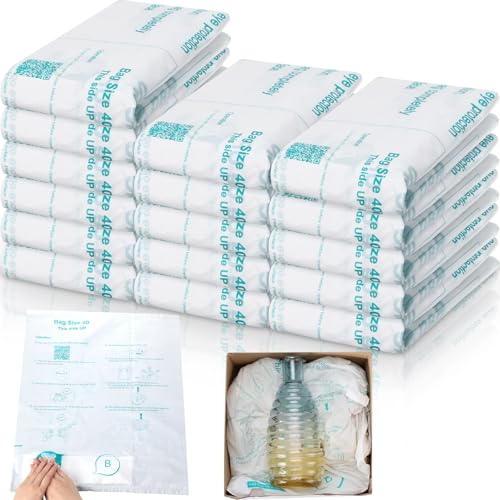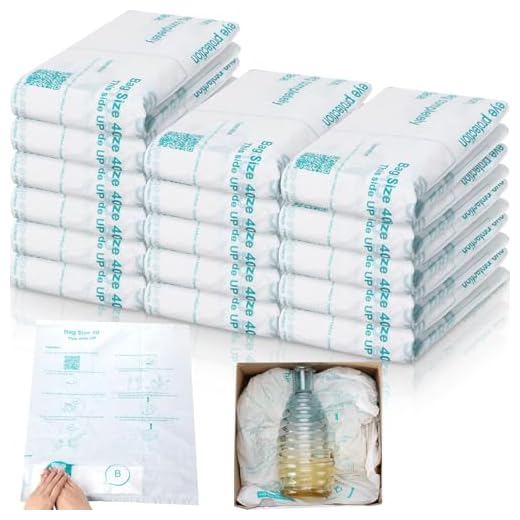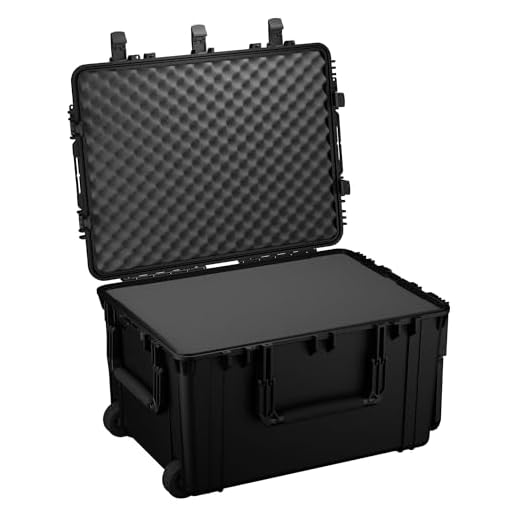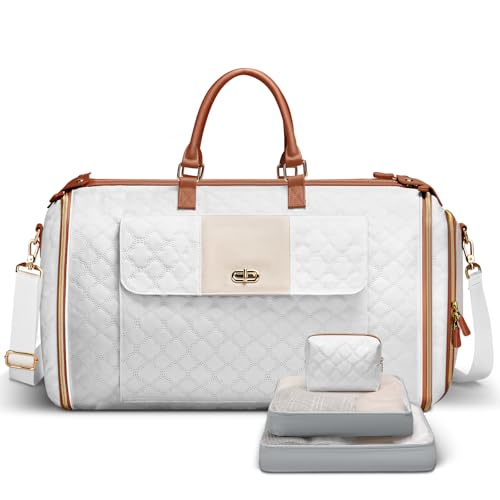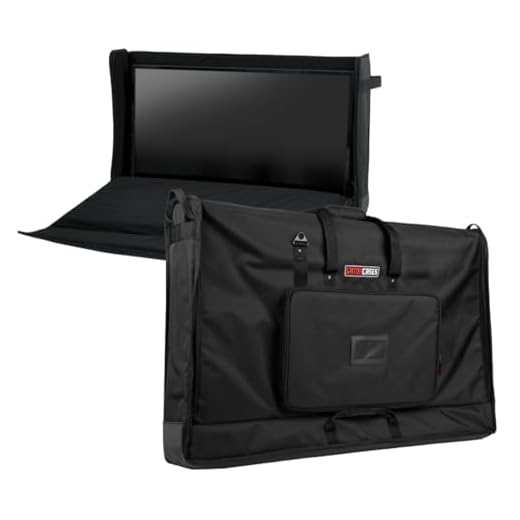







Immediate rule: Small screens (diagonal up to 24″) that, when boxed, fit within standard cabin dimensions – 56 × 36 × 23 cm (22 × 14 × 9 in) – may travel as a carry-on in a rigid case. Anything with packed width exceeding those limits should be declared as an oversized checked item or shipped via a carrier specialized in fragile electronics.
Packing checklist: remove the stand and any detachable parts, place the panel screen-to-screen against a flat corrugated board, surround the unit with at least 5 cm (2 in) of high-density foam on all sides, and double-box whenever possible. Use corner protectors, anti-static bubble wrap for the panel, heavy-duty packing tape and internal straps to prevent movement; label the outer box with FRAGILE and orientation arrows.
Airline limits and fees: typical carry-on allowance uses the 56 × 36 × 23 cm benchmark; common checked-piece weight allowance is 23 kg (50 lb) for many international economy fares, with overweight or oversized surcharges commonly ranging from $75–$300 depending on carrier and route. Prior to arrival at the airport, verify the specific carrier’s maximum linear dimensions and declared-value options.
At the airport: present the boxed unit to the check-in agent for a size inspection, request a fragile-handling tag, photograph the item and packaging before handing it over, and retain receipts and serial numbers for claims. Remove any external batteries or power banks and place those in cabin baggage according to battery watt-hour limits.
Risk management: purchase declared-value protection from the airline or third-party transit insurance that covers accidental damage and full replacement value. For displays larger than ~32″, professional crating and door-to-door white-glove courier service usually results in lower damage risk than standard checked handling.
Transporting a flat-panel television inside checked baggage
Recommendation: Ship flat-panel television in original manufacturer carton placed into a rigid case with minimum 10 cm (4 in) foam or polyurethane padding on every face; remove and pack stand/brackets separately; declare the item at check-in and keep declared mass ≤23 kg (50 lb) per bag to avoid common overweight fees.
Packing checklist
Measure diagonal and depth, then add 6–15 cm for padding and boxing. Use corner protectors, two layers of 100–200 micron bubble wrap, foam sheets, and a plywood inner panel across the screen side for crush protection. Secure cables and remote in separate zip bags. Reinforce external carton edges with heavy-duty packing tape and mark as fragile. Add insurance coverage equal to retail value when using airline excess valuation or third‑party transit insurance.
For short yacht trips choose compact hard cases and wheeled transport solutions – see best luggage for yacht week. For stable placement at destination consult best luggage stand.
Airline limits, fees and handling tips
| Screen diagonal (in) | Inner box approx. dimensions (cm) | Recommended padding (cm) | Typical checked mass limit (kg) |
|---|---|---|---|
| 24 | 62 × 10 × 40 | 6–8 | ≤23 (standard) |
| 32 | 85 × 12 × 52 | 8–10 | ≤23 (standard) |
| 43 | 105 × 14 × 66 | 10–12 | ≤23; overweight fees if >23 |
| 50 | 116 × 16 × 74 | 12–15 | Often oversized if linear dims >158 cm |
Check carrier policy before travel: many operators refuse items exceeding 158 linear cm without prior arrangement, or apply oversized/fragile handling charges. Photograph packed unit and serial number before drop-off for claims. For high-value electronics, prefer courier service with door-to-door insurance or carry as cabin item when dimensions and airline allow.
Airline size, weight and carry-on rules for a flat-panel TV
Recommendation: Treat flat-panel screens under 24 inches diagonal as potential carry-on (measure height/width against the 22 x 14 x 9 in / 56 x 36 x 23 cm typical U.S. cabin allowance); larger displays usually require checked-baggage handling with advance approval and reinforced packaging.
Size thresholds and cabin acceptance
Common U.S. domestic carry-on dimension used by major carriers: 22 x 14 x 9 in (56 x 36 x 23 cm). Most gate agents enforce overall dimensions rather than diagonal screen size, so measure box dimensions if original packaging is used. Practical size guidance: displays ≤24″ diagonal often fit as a carry-on when in a shallow box or soft sleeve; 27–32″ displays typically exceed cabin limits and will be refused at the gate unless gate-checked; 40″+ screens must be checked as oversized freight. Low-cost and international airlines frequently publish smaller cabin allowances and explicit weight caps, so confirm the carrier’s published cabin dimensions before travel.
Weight limits, fees and packing rules
Standard checked-bag free weight on many international tickets: 23 kg (50 lb); overweight surcharges commonly apply between 23–32 kg (50–70 lb). U.S. domestic carriers also enforce a 23 kg (50 lb) soft limit for checked items with overweight fees above that threshold. Fragile electronic items that exceed carry-on dimensions often incur oversized/fragile handling fees or must travel as checked special baggage–advance booking or contacting cargo/checked-baggage desk recommended.
Packing checklist: use original manufacturer carton with internal foam inserts when available; remove and pack detachable stands and external batteries separately; add corner protectors and at least two layers of bubble wrap; label box FRAGILE and take photos of the packed item prior to check-in. At security checkpoints, expect large electronics inside carry-ons to undergo separate screening; if the screen is gate-checked, request a fragile tag and retain proof of condition (photo) at drop-off to support damage claims.
Measuring TV dimensions and selecting suitable suitcase or carton
Select a case or carton whose internal dimensions exceed the television’s outer dimensions by at least 10 cm in width and height and 7.5–10 cm in depth; increase depth allowance if the stand or cable connectors remain attached.
How to measure the set
Measure screen diagonal in inches, then convert to centimetres (1 in = 2.54 cm). For 16:9 displays use width = diagonal × 0.8716 and height = diagonal × 0.4890. Example: 55″ → width ≈ 55×0.8716 = 47.94″ (121.8 cm), height ≈ 55×0.4890 = 26.90″ (68.3 cm). Add bezel thickness (usually 1–3 cm per side) and the maximum depth including back connectors or stand. Record two sets of dimensions: with stand attached and with stand removed.
Measure thickness at the thickest point (include wall-mount bracket if attached) and measure diagonal both for packing orientation checks and to confirm fit inside a rectangular box or case.
Choosing case or carton specifications
For hard cases choose ATA/flight cases for screens ≥65″; select tooling that offers internal foam inserts and rigid corner protection. For cardboard use double-wall corrugated boxes rated 32 ECT (approx. 275 lb) or higher for single-shipment; double-box with a 5–10 cm foam gap between inner and outer boxes for added shock absorption. Recommended padding: closed-cell polyethylene or EPE foam sheets – 3–5 cm per side for rigid shell cases, 5–10 cm per side for corrugated cartons. Use corner blocks and edge protectors to prevent concentrated impact on the panel edges.
Wrap the panel face-first in a layer of anti-static bubble or foam sheet, then place into foam cradle that prevents movement. Secure accessories (stand, cables, remote) in a separate padded pouch to avoid pressure on the screen. Seal with heavy-duty tape and add external straps for larger boxes. Label as FRAGILE and indicate correct upright orientation; do not stack other items on top.
Typical weight ranges (approximate): 32″ 6–8 kg; 43″ 7–11 kg; 55″ 11–18 kg; 65″ 15–30 kg; 75″ 30–45 kg. Use these figures when selecting a case with appropriate handles, wheels and load rating to avoid damage during handling.
Step-by-step packing: padding, corner protection and immobilization
Use a minimum of 5 cm (2 in) high-density polyethylene (HDPE) foam around the frame and 3–5 mm anti-static foam directly over the display; secure all four corners with rigid corner protectors and immobilize the screen inside a hard-shell case with two cross-straps and foam wedges.
Materials and specs
- Anti-static foam sheet: 3–5 mm thickness, surface resistivity 10^6–10^9 Ω/sq.
- High-density foam blocks (HDPE or EPE): 50–70 kg/m³ density, 5 cm minimum thickness around perimeter.
- Rigid corner protectors: polypropylene or ABS, 15–25 mm wall thickness, length covering corner edge by 8–10 cm.
- Heavy-duty hard case: ABS or polycarbonate, internal cavity at least 10 cm larger than device on each axis.
- Straps: 25–35 mm wide, cam-buckle or ratchet, with soft padding to avoid imprinting.
- Desiccant: silica gel, 5–10 g per litre of internal volume.
- Packing tape 48 mm wide, poly sheeting or anti-scratch film for front surface protection.
Step-by-step sequence
- Disconnect stand and cables; store fasteners and small parts in labelled sealed bag and place in a corner pocket of the case.
- Lay the screen face-up on a clean, flat surface. Apply anti-scratch film or 3–5 mm anti-static foam directly to the panel; avoid pressure on pixels.
- Wrap the entire unit in an anti-static poly bag and seal to prevent dust ingress and limit moisture transfer.
- Fit rigid corner protectors on all four corners, ensuring they contact the frame and not the panel glass. Fix with light adhesive tape to prevent movement.
- Place the protected screen into the hard case so the display is centered with at least 5 cm clearance all around. Insert 5 cm HD foam blocks between the device frame and case walls; two on each side, one at top and one at bottom.
- Use foam wedges to lock the unit laterally; wedges should compress slightly to create friction without deforming the frame.
- Apply two cross-straps: one horizontal across the middle and one vertical near the base. Pad strap contact points with thin foam to prevent edge pressure marks.
- Fill any remaining voids with loose polyethylene foam or inflated air cushions; keep pressure uniform to avoid point loads on the screen.
- Place silica gel packs inside the case, away from direct contact with the panel; close and seal the case with packing tape and tamper-evident strips.
- Label the case “FRAGILE – SCREEN” and indicate upright orientation arrows. When possible, transport the case in a vertical orientation to reduce bending stress on the display panel.
Note on environmental exposure: cargo holds and non-climate-controlled storage can reach sub-zero temperatures and may affect liquids inside accessories – see can red wine be frozen for freezing behavior as a reference for how fluids react at low temperatures.
Security screening and declaration: what to expect at the airport
Declare a flat-screen television at the airline check-in counter and present model/serial documentation; expect dedicated X‑ray screening and likely manual inspection before acceptance for transport.
Lithium battery rules: spare lithium‑ion cells must be carried in the cabin only. Batteries rated up to 100 Wh are permitted without airline approval; between 100 Wh and 160 Wh require written airline approval; batteries above 160 Wh are prohibited on passenger aircraft. Terminals must be taped or placed in individual plastic bags and kept inside carry items in the cabin if spares are present.
Checkpoint procedure: televisions too large for standard bins will be screened separately. Allow an extra 15–45 minutes at security for removal from a carton, unfolding of corner protection, and potential opening for inspection. Security staff may request power‑on demonstration if power source is integrated; bring appropriate power cords or an external battery in the cabin to enable this test.
When an item triggers secondary inspection, expect disassembly of outer packaging and removal of protective foam. Photographs or video notes taken prior to arrival help speed reassembly claims. If screening reveals prohibited components (unapproved radio transmitters, loose high‑capacity batteries), the item can be denied carriage or seized.
Customs declaration thresholds (examples): United States–personal exemption commonly USD 800 on return; European Union–non‑EU arrivals by air: EUR 430 for passengers aged 15+. Keep original receipts, record serial numbers, and use the red/green channel or electronic declaration form as required by the arrival country. Carry proof of purchase on a mobile device and a printed copy when possible.
If an oversized or fragile flat screen is refused at security, alternative options include airline cargo services or accredited freight forwarders using IATA Dangerous Goods rules for battery transport. Request a written refusal or screening report at the checkpoint to support subsequent shipping insurance or claims.
Choose freight for screens >55″ or declared value >$1,000; use gate-check for boxed screens 30–55″ under ~25–30 lb when airline policy permits; accept checked-baggage only for small, low-value sets that fit standard checked dimensions.
Cost comparison (typical ranges)
Checked-baggage: standard checked-item fees (if carrier accepts a TV as checked) commonly range $0–$35 for a regular bag, but oversized/oversize charges apply when linear dimensions exceed 62 in – expect $100–$400 additional. Overweight fees (typically >50 lb) add $75–$200. Total worst-case domestic airline handling + fees: $150–$700.
Gate-check: often free for items dropped at the gate, but some carriers charge oversize/odd-item fees $50–$150. Practically, gate-check eliminates standard checked-bag fees in many cases, so typical outlay: $0–$150.
Freight (LTL/domestic): crate + pallet + pickup runs $100–$600 for continental U.S. moves on common routes; long-distance or expedited LTL $300–$1,200. White-glove residential delivery adds $150–$500. International freight (air or ocean) commonly starts at $400 and rises to $2,000+. Courier parcel (UPS/FedEx Ground) for a boxed 55″ often quotes $75–$300 depending on dimensional weight.
Damage likelihood, liability and insurance
Handling exposure: checked-baggage items travel through automated sortation and multiple transfers – higher touchpoints mean higher breakage probability. Gate-checked items usually see fewer handlers before stowage, lowering rough-handling incidence. Freight with palletization and a wooden crate plus white-glove service yields the lowest physical-damage exposure.
Carrier liability: airline liability limits for checked items vary by carrier and route; carriers often impose a per-passenger cap and separate terms for fragile electronics. Freight carriers allow declared-value coverage at extra cost; default liability without declared value is typically minimal. Parcel carriers use dimensional-weight pricing and allow declared value for a modest fee; third-party transit insurance typically costs 1–3% of declared value and covers theft/damage where carrier limits fall short.
Claims and documentation: keep serial numbers, purchase receipts and multiple timestamped photos of the packaged unit before handoff. Airlines frequently require damage claims within 7–21 days; freight and parcel carriers have varying windows and require a damage inspection report and signed delivery receipt. Expect settlement delays of 30–90 days for non-insured claims.
Decision matrix (quick rules): freight for >55″ or market value >$1,000, or when white-glove delivery is required; gate-check for moderate-size boxed units (30–55″) that meet gate-drop rules and where minimal fees are preferred; checked-baggage only when the screen is small (<30"), low in value, or when cost avoidance outweighs damage risk.
Documenting value, buying insurance and filing a damage claim
Treat a high-value television as an insured shipment: capture proof of purchase, serial number, time-stamped photos (power-on and external labels), and retain original packaging before check-in or freight drop-off.
- Documentation checklist
- Invoice/receipt showing model, serial number, purchase date and purchase price (digital copy backed up to cloud).
- High-resolution photos: front (screen powered), rear (serial/model label), ports/corners, all sides of original box, and photos of the TV inside the packaging during packing. One photo must include a dated, readable calendar or smartphone timestamp.
- Short video (30–60s) showing unboxing, serial plate, and the packing process; keep the original video file.
- Copy of boarding pass, air waybill or bill of lading and Property Irregularity Report (PIR) or cargo receipt if issued.
- Any appraisal for values exceeding retail receipt (independent appraiser or manufacturer valuation).
- Insurance options and how to choose
- Travel insurance with baggage protection – look for coverage limits per-item and per-trip. Many policies set per-item ceilings (commonly $500–$2,000) and require proof of purchase.
- Airline declared value or excess liability – available at check-in/cargo for an extra fee; international carriage governed by Montreal Convention limits (approx. 1,288 SDR). Verify carrier contract of carriage for domestic caps.
- Homeowner/renter policy – off-premises personal property coverage may apply; check sublimits for electronics and deductible amount.
- Credit card purchase protection – short-term protection (often 90 days) and per-claim caps (commonly $500–$1,000); useful when item was bought with the card used for purchase.
- Third-party transit/freight insurance – best for shipping as cargo; offers replacement cost options and higher limits in exchange for declared value and premium.
- Buying coverage – concrete steps
- Determine full replacement value (retail receipt + taxes + shipping). Use that figure when requesting declared value or policy limits.
- Compare deductibles and per-item limits. If travel policy’s per-item cap is below replacement value, purchase supplemental declared-value insurance or freight insurance.
- Buy transit insurance prior to check-in or tendering to carrier; obtain written certificate or policy number and email confirmation.
- If using airline excess liability, request written endorsement on the baggage/cargo receipt showing declared value and extra charge paid.
- Filing a damage claim – step-by-step with deadlines
- At point of arrival or delivery: inspect the TV before leaving the airport/cargo terminal. Report visible damage immediately to the airline or carrier desk and obtain a PIR or damage report reference.
- Preserve all packaging and the damaged item intact. Carriers frequently require original packaging for inspection; discard nothing until claim settled.
- Take detailed photos of damage, packaging, and labels. Capture close-ups and context shots showing scale (ruler or coin).
- Request written confirmation of the in-person report; note name, badge number and report number.
- Submit formal claim to carrier and/or insurer within policy deadlines: many carriers require damage claims within 7 days of receipt (Montreal Convention standard for damaged baggage) and delay claims within 21 days. Insurers often require prompt notice – typically within 30–90 days; check policy wording.
- Attach to claim: PIR, photos, receipt, serial number, repair estimate from authorized service center, proof of insurance purchase or declared value receipt, and any correspondence with carrier.
- If insurer requests salvage, follow instructions. If carrier offers repair voucher or settlement, request itemized basis for valuation (repair vs replacement cost). Do not accept final settlement without verifying it covers replacement cost or agreed-upon value.
- Track claim with written logs: dates, names, reference numbers, copies of submitted documents. Escalate to regulator or aviation consumer affairs if acknowledgement not received within stated timeframes.
- Common exclusions and red flags
- Pre-existing damage, cosmetic scratches, and damage from inadequate internal packing are frequently denied. Video of the packing process reduces this risk.
- Policies often exclude damage caused by manufacturer defects or wear-and-tear; warranties cover functional failures not transit damage.
- Failure to declare high value at check-in or to purchase supplemental insurance can limit carrier liability to statutory caps.
- Missing serial number or receipt weakens claims significantly; replacement without proof often paid at depreciated value or denied.
- Practical tips to strengthen a claim
- Use a credit card with known purchase protection for the purchase; note card benefits and filing windows before travel.
- Email copies of all evidence to an independent address and to the insurer at time of purchase so timestamps predate any incident.
- Obtain a professional repair estimate from an authorized service center within 3–7 days of reporting damage; keep original repair receipts.
- If carrier denies liability, request written denial with reasons and reference to contract of carriage; include that in insurer submission and, if needed, small-claims or regulatory complaint.
FAQ:
Can I put a LED TV in my checked luggage on a plane?
Yes, airlines will usually accept a LED TV in checked baggage, but there are limits and risks. Size and weight rules vary by carrier: many airlines treat large flat screens as oversize or special items and charge extra. Smaller TVs that fit the carry-on size limits have a much lower risk of damage if taken into the cabin. Checked sets face rough handling, so pack them well (original box with foam is best), label them as fragile, and consider buying declared-value coverage or using a shipping service for high-value units. Also check for any built-in batteries (rare for TVs) and pack or remove accessories separately in your carry-on. At the airport, security may request inspection, and customs rules may apply when entering another country.
How should I pack and transport a LED TV for air travel to avoid damage, fees, and problems at security or customs?
Start by measuring the TV’s dimensions and weight and calling the airline to confirm their rules and fees for oversize or fragile items. If the screen can fit in the cabin overhead or under the seat and the carrier allows it, carrying it on is the safest option. For checked transport, follow these steps: 1) Use the original manufacturer box and inserts if available; they are shaped to protect the panel. 2) Add layers of protection: bubble wrap over the screen, foam or corner protectors, a sheet of corrugated cardboard across the front and back, and extra padding around edges. 3) Place the boxed TV inside a secondary protective shell — a hard case, a wooden crate, or an extra cardboard shipping box — for greater shock resistance. 4) Remove and pack remote controls, cords, and small parts in your carry-on. 5) Photograph the TV’s condition before handing it over and keep receipts; consider declared-value coverage at check-in or third-party shipping insurance for expensive units. 6) Label the package as fragile and attach contact information. At security, be prepared to power the unit on if requested; keep documentation handy for customs when traveling internationally, since new electronics can carry import duties. For very valuable or fragile displays, shipping by a specialized freight or courier service is often the safer choice than checking the item as luggage.

